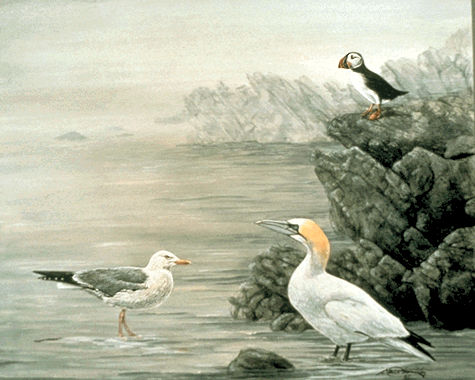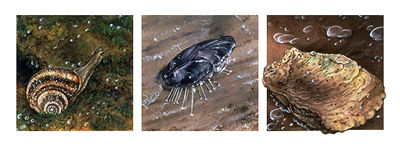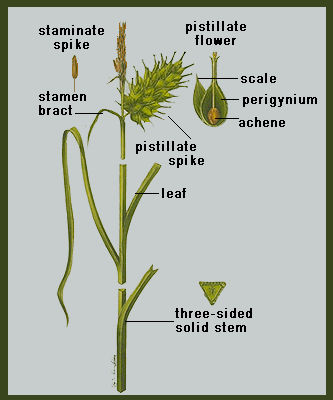Article
Saxifrage
Flowers, mostly small, commonly white or yellow, are borne as terminal clusters on hairy stalks. Plants form tufted, spreading cushions, frequently giving striking patches of colour. S.

Enter your search term
Signing up enhances your TCE experience with the ability to save items to your personal reading list, and access the interactive map.
Create AccountArticle
Flowers, mostly small, commonly white or yellow, are borne as terminal clusters on hairy stalks. Plants form tufted, spreading cushions, frequently giving striking patches of colour. S.
"https://development.thecanadianencyclopedia.ca/images/tce_placeholder.jpg?v=e9dca980c9bdb3aa11e832e7ea94f5d9" // resources/views/front/categories/view.blade.phphttps://development.thecanadianencyclopedia.ca/images/tce_placeholder.jpg?v=e9dca980c9bdb3aa11e832e7ea94f5d9

Article
Scale Insect, highly specialized insect belonging to order Hemiptera, suborder Homoptera, super-family Coccoidea.
"https://d2ttikhf7xbzbs.cloudfront.net/media/media/439b0d13-46b3-4cdf-aa29-b296eecb9985.jpg" // resources/views/front/categories/view.blade.phphttps://d2ttikhf7xbzbs.cloudfront.net/media/media/439b0d13-46b3-4cdf-aa29-b296eecb9985.jpg

Article
Scallop is a bivalve (hinged shell) mollusc of suborder Pectinina. Scallops are found in all seas.
"https://d2ttikhf7xbzbs.cloudfront.net/media/media/cd549afe-419a-4907-88e2-c009fcbc4fa7.jpg" // resources/views/front/categories/view.blade.phphttps://d2ttikhf7xbzbs.cloudfront.net/media/media/cd549afe-419a-4907-88e2-c009fcbc4fa7.jpg

Article
A scorpion is a carnivorous and venomous arthropod of the class Arachnida, order Scorpiones. Known from fossils 425-450 million years old, scorpions are among the oldest terrestrial animals.
"https://d2ttikhf7xbzbs.cloudfront.net/media/Twitter_Cards/scorpion.jpg" // resources/views/front/categories/view.blade.phphttps://d2ttikhf7xbzbs.cloudfront.net/media/Twitter_Cards/scorpion.jpg

Article
Scorpionfish, or rockfish (Scorpaenidae), family of bottom-dwelling, marine fishes with large heads, mouths and eyes, stout bodies and large pectoral fins.
"https://d2ttikhf7xbzbs.cloudfront.net/media/media/76402cf1-13da-4268-b02d-f3be29a8ff94.jpg" // resources/views/front/categories/view.blade.phphttps://d2ttikhf7xbzbs.cloudfront.net/media/media/76402cf1-13da-4268-b02d-f3be29a8ff94.jpg

Article
Scotian Shelf, a 700 km section of the Continental Shelf off Nova Scotia. Bounded by the Laurentian Channel on the NE, and Northeast Channel and the Gulf of Maine on the SW, it varies in width from 120 to 240 km; the average depth is 90 m.
"https://development.thecanadianencyclopedia.ca/images/tce_placeholder.jpg?v=e9dca980c9bdb3aa11e832e7ea94f5d9" // resources/views/front/categories/view.blade.phphttps://development.thecanadianencyclopedia.ca/images/tce_placeholder.jpg?v=e9dca980c9bdb3aa11e832e7ea94f5d9

Article
Sea ice formed by the freezing of seawater and floats on the surface of the polar oceans. Its coverage varies with the seasons; in the Northern Hemisphere sea ice ranges from a minimum of about 9 million km2 in September to a maximum of about 16 million km2 in March. In the Southern Hemisphere the range is from 3 million to 19 million km2, with the minimum and maximum coverage occurring in February and September respectively. The thickness of sea ice can vary from a few centimetres for newly formed ice in protected locations to 20 m or more in ridges; however, typical thicknesses are about 3 m in the Arctic and about 1 m in the Antarctic.
"https://d2ttikhf7xbzbs.cloudfront.net/media/media/cd41d64d-2904-401a-a652-e658f4d4926f.jpg" // resources/views/front/categories/view.blade.phphttps://d2ttikhf7xbzbs.cloudfront.net/media/media/cd41d64d-2904-401a-a652-e658f4d4926f.jpg

Article
The northern sea lion, also called the Steller sea lion (Eumetopias jubatus), is the largest of the eared SEALS.
"https://d2ttikhf7xbzbs.cloudfront.net/media/media/440414f5-caff-4536-9eac-90dceba5603d.jpg" // resources/views/front/categories/view.blade.phphttps://d2ttikhf7xbzbs.cloudfront.net/media/media/440414f5-caff-4536-9eac-90dceba5603d.jpg

Article
Sea Otter (Enhydra lutris), largest and most marine weasel, lives exclusively in shallow seas of the N Pacific, formerly from Japan to California.
"https://d2ttikhf7xbzbs.cloudfront.net/media/media/51a3c31a-eae7-46e5-8d0a-414029daf86c.jpg" // resources/views/front/categories/view.blade.phphttps://d2ttikhf7xbzbs.cloudfront.net/media/media/51a3c31a-eae7-46e5-8d0a-414029daf86c.jpg

Article
Sea Urchin, radially symmetrical marine invertebrate. Sea urchins and near relatives, the sand dollars and heart urchins, belong to class Echinoidea of phylum Echinodermata.
"https://d2ttikhf7xbzbs.cloudfront.net/media/media/13013e6e-ff67-461b-a42c-416983fc0e43.jpg" // resources/views/front/categories/view.blade.phphttps://d2ttikhf7xbzbs.cloudfront.net/media/media/13013e6e-ff67-461b-a42c-416983fc0e43.jpg

Article
Seabirds are those bird species which spend long periods away from land and obtain all or most of their food from the sea while flying, swimming or diving, and occupy all of the world's oceans.
"https://d2ttikhf7xbzbs.cloudfront.net/media/media/74b6b3be-a60f-4ceb-91d9-cad952152631.jpg" // resources/views/front/categories/view.blade.phphttps://d2ttikhf7xbzbs.cloudfront.net/media/media/74b6b3be-a60f-4ceb-91d9-cad952152631.jpg

Article
Seal is a common name given to a diverse group of aquatic, generally marine mammals of the order Pinnipedia.
"https://d2ttikhf7xbzbs.cloudfront.net/media/media/ad6eb052-20b9-49bd-8d81-28d2b97038ec.jpg" // resources/views/front/categories/view.blade.phphttps://d2ttikhf7xbzbs.cloudfront.net/media/media/ad6eb052-20b9-49bd-8d81-28d2b97038ec.jpg

Article
Shell is a hard covering made primarily of calcium carbonate, secreted by invertebrate animals (eg, molluscs, barnacles, sea urchins).
"https://d2ttikhf7xbzbs.cloudfront.net/media/media/c310bf19-fd9d-46f4-9608-57aec8a21c89.jpg" // resources/views/front/categories/view.blade.phphttps://d2ttikhf7xbzbs.cloudfront.net/media/media/c310bf19-fd9d-46f4-9608-57aec8a21c89.jpg

Article
Seaweeds are multicellular marine algae, visible to the naked eye. They extend from the uppermost reaches of sea spray on the shore to the lower limits of light beneath the surface of the water.
"https://d2ttikhf7xbzbs.cloudfront.net/media/media/7fef297e-e301-4ad4-8cc1-d64bd2f9e902.jpg" // resources/views/front/categories/view.blade.phphttps://d2ttikhf7xbzbs.cloudfront.net/media/media/7fef297e-e301-4ad4-8cc1-d64bd2f9e902.jpg

Article
Sedge is a grasslike plant common throughout temperate and cold regions. The genus name, Carex (family Cyperaceae), is probably derived from keiro, referring to the sharp leaf margins.
"https://d2ttikhf7xbzbs.cloudfront.net/media/media/e54d9ac1-e557-4493-aa21-0155fa62dd38.jpg" // resources/views/front/categories/view.blade.phphttps://d2ttikhf7xbzbs.cloudfront.net/media/media/e54d9ac1-e557-4493-aa21-0155fa62dd38.jpg
